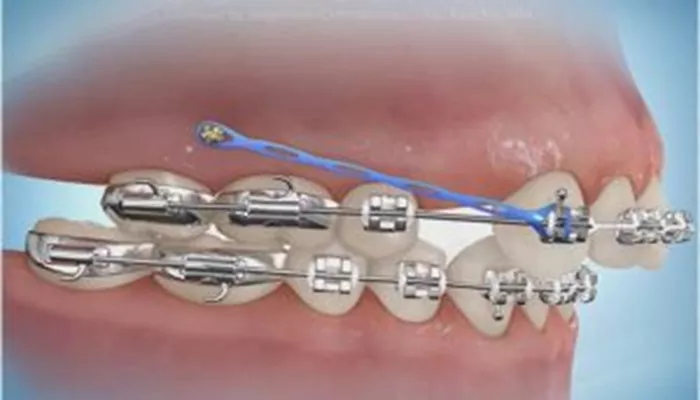Orthodontics is a branch of dentistry focused on correcting malpositions of the teeth and jaws, aiming to enhance both dental health and aesthetics. One common concern among patients considering braces is whether the treatment will alter the appearance of their lips, specifically whether it can make them appear larger. To address this question comprehensively, we will explore the physiological mechanisms involved in lip size and shape, the impact of braces on oral structures, and any potential indirect effects on lip appearance.
The Physiology of Lip Size and Shape
Lips are a complex structure composed of multiple layers of tissue, including skin, muscle, and underlying fat. Their size and shape are influenced by genetic factors, age, and hormonal changes.
Genetic Factors: Lip size and shape are largely determined by our DNA. Individuals inherit traits from their parents that contribute to the unique appearance of their lips.
Age and Hormonal Changes: As we age, our lips undergo subtle changes. For instance, during puberty, hormonal fluctuations can lead to increased blood flow and tissue growth, which may temporarily affect lip size. Similarly, as we age, the skin and underlying tissues lose elasticity, leading to a flattening of the lips.
Muscle and Fat Distribution: The lips contain muscles that are responsible for their movement and shape. Additionally, the distribution of fat within the lips contributes to their fullness and volume.
The Impact of Braces on Oral Structures
Braces work by applying gentle force to the teeth and jaws, gradually moving them into their correct positions. This process involves the following key aspects:
Tooth Movement: Braces use brackets and wires to create tension that slowly shifts the teeth. This movement is gradual and controlled, ensuring minimal discomfort and disruption to daily activities.
Jaw Alignment: In some cases, braces may also be used to correct jaw alignment issues, such as overbites or underbites. This involves more complex adjustments and may require additional appliances, such as headgear or jaw expanders.
Soft Tissue Adaptation: As the teeth and jaws move, the surrounding soft tissues, including the gums, cheeks, and lips, will gradually adapt to the new positions. This process is usually painless and occurs naturally over time.
Potential Indirect Effects on Lip Appearance
Despite the direct impact of braces on tooth and jaw alignment, there is little evidence to suggest that they cause significant changes in lip size. However, there may be some indirect effects that patients should be aware of:
Temporary Swelling: During the initial stages of braces placement, patients may experience temporary swelling of the lips and cheeks. This is due to the inflammation caused by the brackets and wires pressing against the soft tissues. However, this swelling is usually mild and resolves within a few days to a week.
Changes in Facial Profile: As the teeth and jaws move into their correct positions, patients may notice changes in their facial profile. For instance, an overbite may be reduced, leading to a more balanced and aesthetically pleasing appearance. These changes can indirectly affect the perception of lip size, as a more balanced facial profile may make the lips appear more prominent in relation to the rest of the face.
Muscular Adaptation: The muscles around the lips and cheeks may undergo subtle changes as they adapt to the new positions of the teeth and jaws. However, these changes are usually minimal and do not result in significant alterations in lip size.
Factors That Influence Lip Size
While braces may have some indirect effects on lip appearance, several other factors play a more significant role in determining lip size:
Genetics: As mentioned earlier, genetics is the primary determinant of lip size and shape. Individuals inherit traits from their parents that contribute to the unique appearance of their lips.
Hormonal Changes: Hormonal fluctuations, particularly during puberty and pregnancy, can affect the distribution of fat and muscle in the lips, leading to temporary changes in size and shape.
Lifestyle Factors: Smoking, alcohol consumption, and poor nutrition can all contribute to the breakdown of collagen and elastin in the skin, leading to a flattening of the lips over time.
Age: As we age, the skin and underlying tissues lose elasticity, contributing to a flattening of the lips and a reduction in volume.
Addressing Concerns About Lip Size
For patients concerned about the potential impact of braces on lip size, it is important to have realistic expectations and understand the limitations of orthodontic treatment. While braces can significantly improve dental health and aesthetics, they do not have a direct effect on lip size.
If patients are dissatisfied with the appearance of their lips, they may consider alternative treatments such as dermal fillers, lip augmentation surgery, or non-surgical lip enhancement procedures. However, these treatments should only be considered after careful consultation with a qualified medical professional, as they involve risks and potential complications.
Conclusion
In conclusion, braces do not have a direct effect on lip size. While there may be some indirect effects on lip appearance due to changes in facial profile and muscular adaptation, these changes are usually minimal and do not result in significant alterations in lip size. For patients concerned about the appearance of their lips, it is important to have realistic expectations and understand the limitations of orthodontic treatment. Alternative treatments for lip enhancement should only be considered after careful consultation with a qualified medical professional. By maintaining good oral hygiene and following the advice of their dentist, patients can achieve healthy, aesthetically pleasing smiles that reflect their unique personalities.
Related topics:

